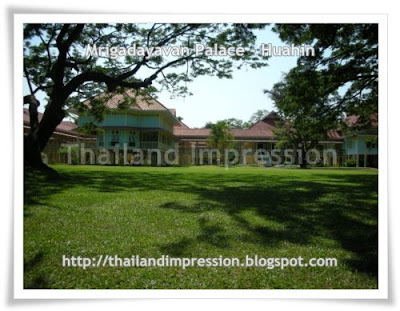Mueang Sing Historical Park - Kanchanaburi
 The ancient prehistoric civilization flourished in the western part of Thailand dates back to several tens of thousand years. From Kanchanaburi province especially in the basin of the two branches of the Kwai Yai and Noi rivers, many archaeological objects have been discovered.
The ancient prehistoric civilization flourished in the western part of Thailand dates back to several tens of thousand years. From Kanchanaburi province especially in the basin of the two branches of the Kwai Yai and Noi rivers, many archaeological objects have been discovered.
One of the most important sites found in the Kwai Noi River basin is an ancient city site named Muang Sing.

The important discoveries made near the ancient city remains include prehistoric human skeletons together with metal tools, vessels and ornaments; brick bases of the Dvaravati period architecture; and the laterite ruins of the13th century.
 This Muang Sing must have been an important outpost of Angkor as it was mentioned in the Prasat Phra Khan inscription made during the reign of King Jayavarman VII.
This Muang Sing must have been an important outpost of Angkor as it was mentioned in the Prasat Phra Khan inscription made during the reign of King Jayavarman VII. At present, Muang Sing on the bank of the Kwai Noi River is included in Muang Sing sub-district. The vestiges of the ancient city comprise several layers of rectangular walls and moats, having Prasat Muang Sing in the middle. Other three lesser monuments in ruins are also found in the area. From the main monument has been discovered a number of Mahayana Buddhist images.
At present, Muang Sing on the bank of the Kwai Noi River is included in Muang Sing sub-district. The vestiges of the ancient city comprise several layers of rectangular walls and moats, having Prasat Muang Sing in the middle. Other three lesser monuments in ruins are also found in the area. From the main monument has been discovered a number of Mahayana Buddhist images.
The three lesser monuments could have been built in the same period as Prasat Muang Sing in the 13th century, in the area which had been on the important communication route that connected central Thailand to Lower Burma.

Realizing the importance of the site, the Fine Arts Department initiated the renovation of Prasart Muang Sing in 1974. The site then was a mound covered with heavily overgrown vegetation. When the renovation work of the monument was completed covering an area of around 640 rai of land, Muang Sing Historical Park had the official opening presided over by H.R.H. Princess Mahachakri Sirindhorn on April 3, 1987. Since then Muang Sing Historical Park has become a proud cultural heritage site, serving as an educational source as well as an interesting tourist attraction in the region. In the boundary of the historical park, there is a museum which houses various artifacts and sculptures displayed comprehensively for an easy understanding of the local history.

Muang Sing Histrocial Park is provided with various facilities. Excellent roads are constructed to make it easily accessible and comfortable accomodations are established on the bank of the Kwai Noi River. Thus, Muang Sing Historical Park became an important place to visit in the study of art and culture, as well as to relax in a comfortable surroundings.

The laterite sanctuary was constructed in the late Lop Buri Period ca. 11th-13th century A.D. It has a square plan covering a total area of over 800 rai and surrounded by a laterite wall measuring 880 metres wide. Influenced by ancient Khmer culture, Its principal tower is encircled by a laterite wall, moat and earthen mound and was built in a mixture of the folk school of art and Bayon style of King Jayavarman VII's period in Cambodia.

Prasat Mueang sing located some 7 km. from Ban Kao National Museum. Take Highway 323 (Kanchanaburi - Sai Yok),turn left at Km.15, and continue for another 7 km. to Prasat Mueang Sing.
Opening : daily, 9:00 - 18:00
Admission fee: 40 Baht per person + bicycle: 10 Baht,motorbike: 20 Baht, car: 30 Baht
By Rail: get off at Thakilen Station



Comments
Post a Comment